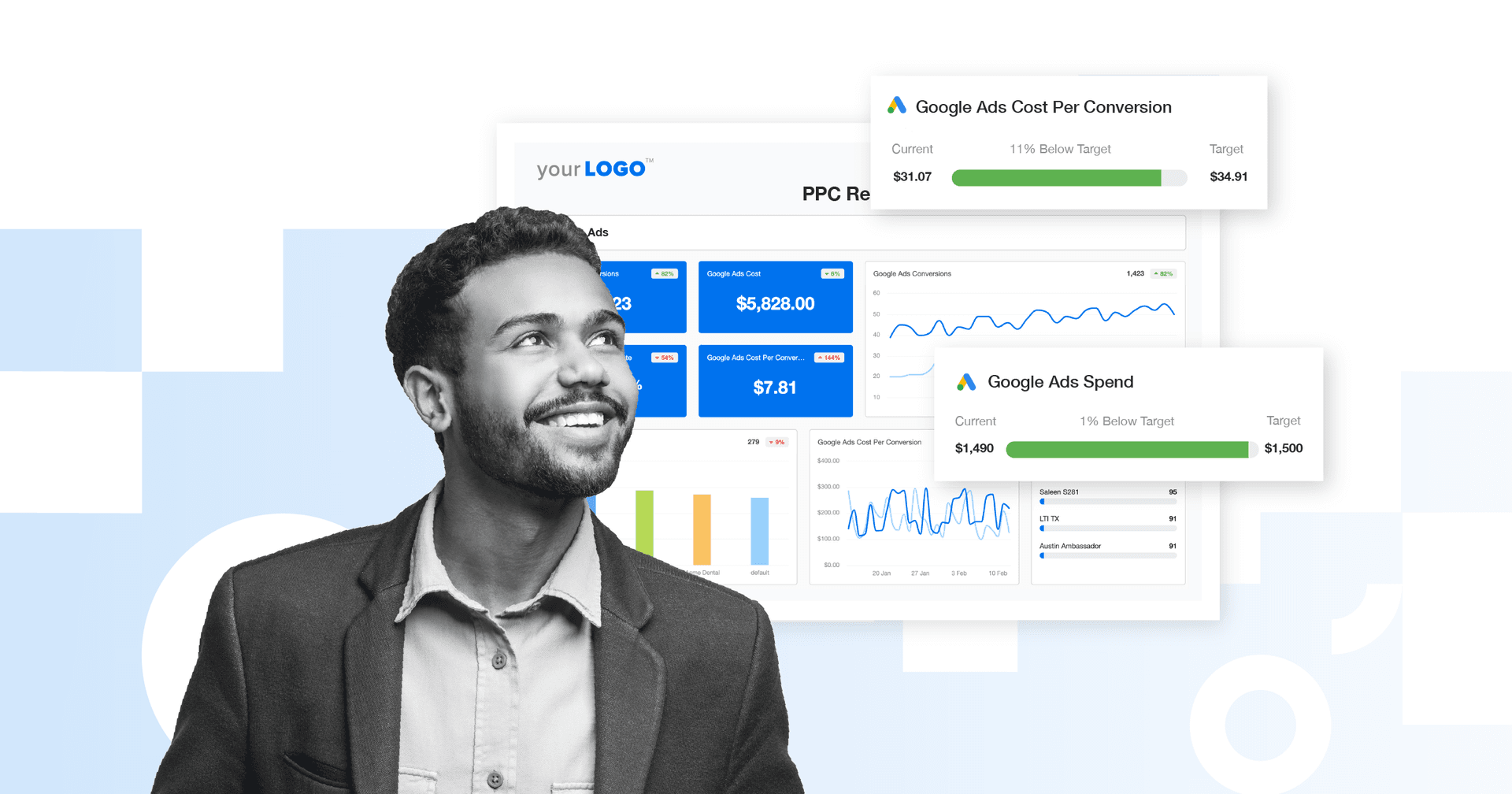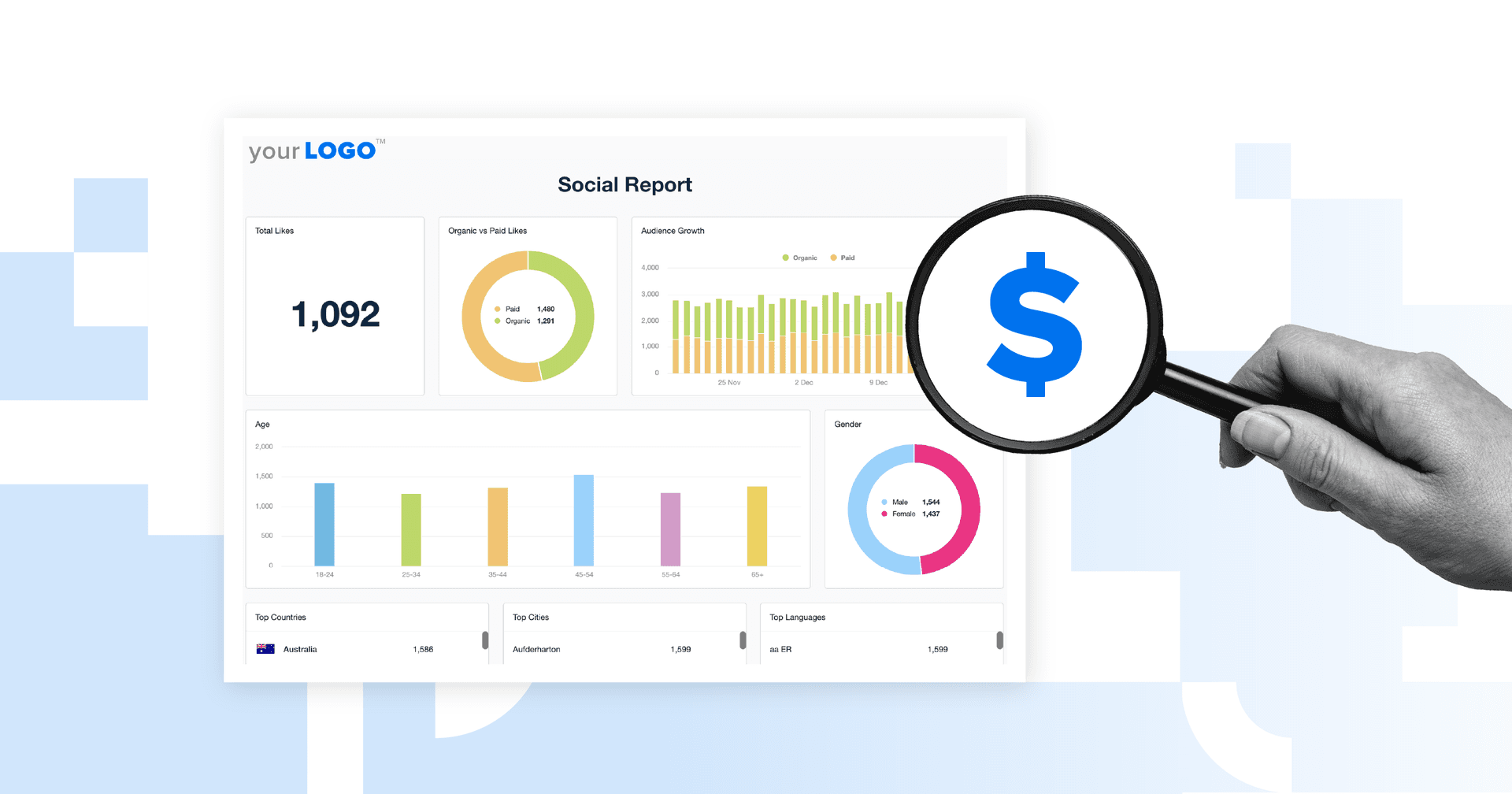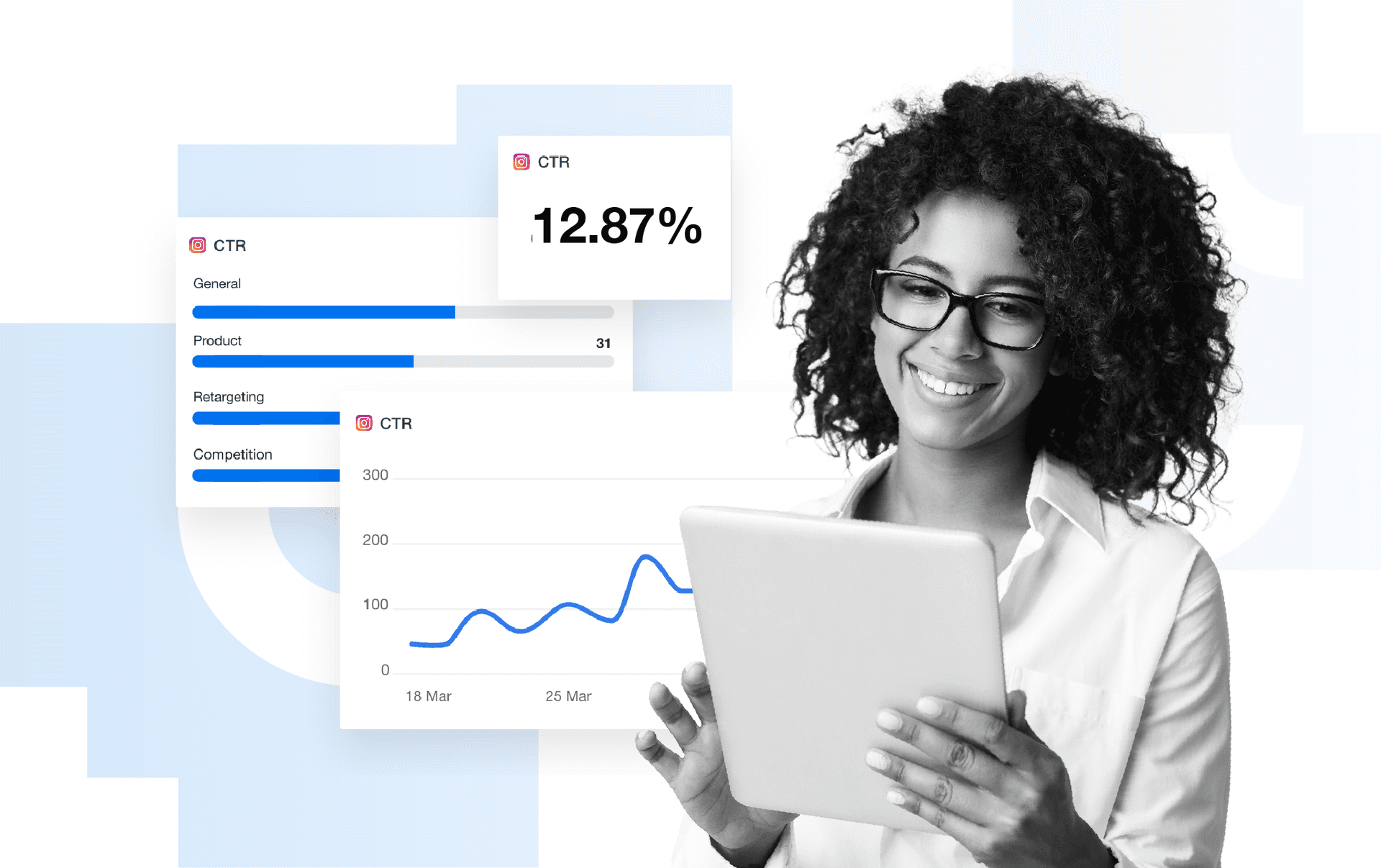Table of Contents
QUICK SUMMARY:
ROI tracking is how you build trust, justify your strategy, and retain clients long-term. In this article, we’ll break down why ROI tracking is essential for marketing agencies, which metrics matter most, how to calculate ROI effectively, and how showing return on investment adds momentum to your most successful client marketing endeavors.
Marketing agencies are always under pressure to deliver. If the results aren’t coming in, clients start asking questions–and potentially looking at competing agencies to see what else is out there.
Especially in 2025, with marketing budgets shrinking, the search landscape shifting beneath our feet, and AI changing the game, agency clients need solid proof that their investment in your agency is paying off. That means that ROI tracking is more important than ever.
In this article, we’re breaking down the most important aspects of ROI tracking, sharing the key metrics, and even listing the tools your agency should use to demonstrate value to your clients.
What is ROI tracking?
We’ve all had that client who expects overnight results, wondering why a new blog post hasn’t hit page one of Google or why leads aren’t flooding in right after launching an ad campaign.
The reality is that effective marketing takes time. Just because results aren’t immediate doesn’t mean your efforts aren’t working. In fact, much of digital marketing happens beneath the surface–and without ROI tracking, it’s easy for that progress to go unnoticed.
ROI tracking is the return on investment your clients receive from all of your marketing activities compared to what they pay for your services. It refers to all profit and revenue growth from all of their different marketing channels.
ROI tracking proves your value, even when it doesn't show up the way clients imagined. It measures the return your clients get from your marketing activities relative to what they’re investing. That includes everything from revenue generated by email and social campaigns to long-term gains from SEO and content marketing.
For agencies, ROI tracking is a way to prove your impact with data. Instead of vague promises, you can actually calculate ROI and use it as an example of real value backed by tangible results.
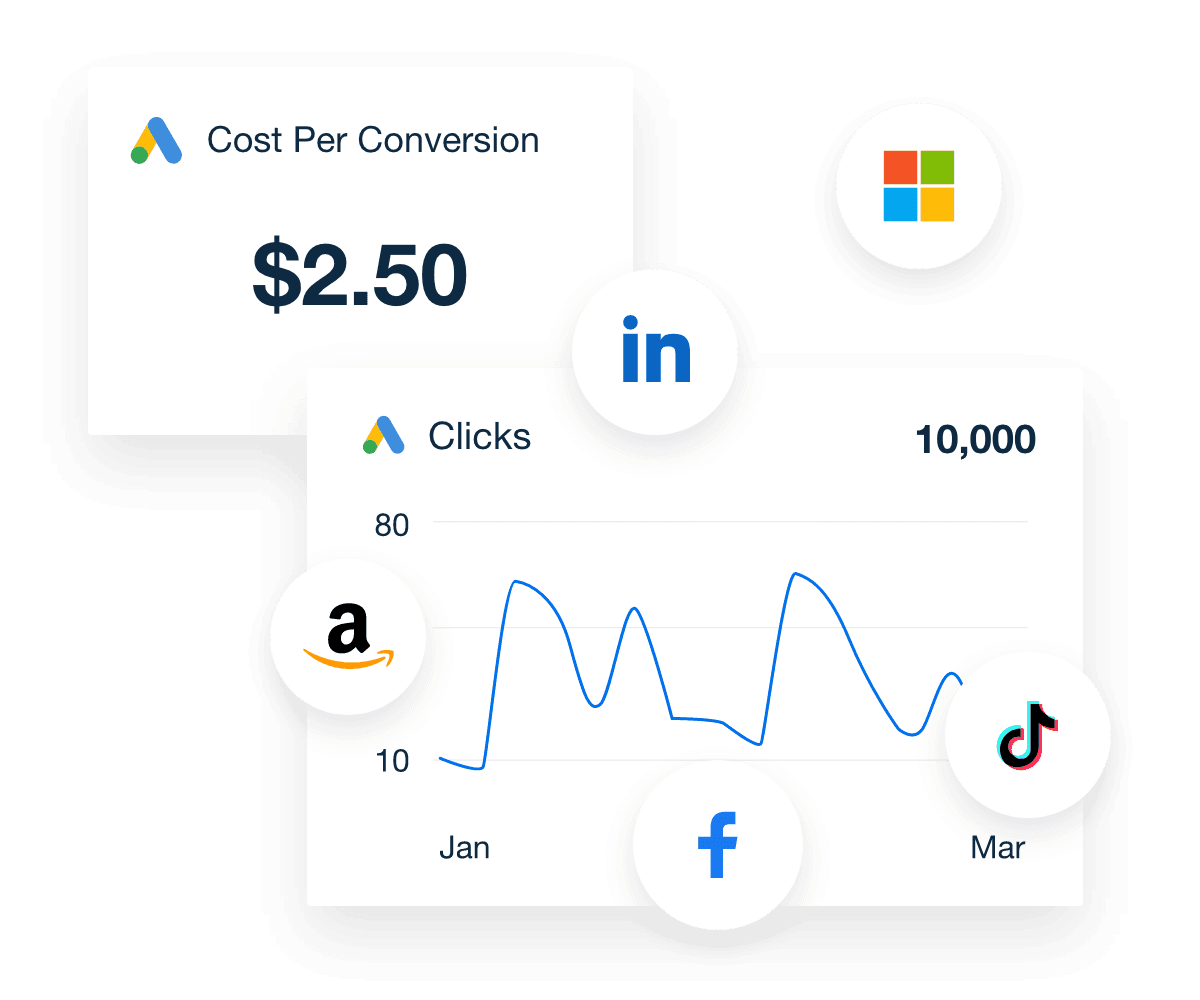
Simplify marketing results for clients with clear, easy-to-understand reports built in minutes with AgencyAnalytics. Start your 14-day free trial today!
Why ROI tracking is critical for digital marketers
The best digital marketing strategies are driven by data, and ROI is the metric that matters most. When you clearly demonstrate the return your work generates, it’s easier to justify your services, secure buy-in, and keep clients coming back.
ROI tracking proves that all those strategic decisions weren’t just talk–they delivered real results. It connects the dots between marketing activity and business outcomes, giving your clients or leadership teams the confidence to keep investing.
When you know which channels, tactics, or campaigns generate the highest return, you make smarter, faster decisions. This is especially important for small and midsize businesses where budgets are tight and performance needs to be crystal clear.
Ultimately, clients want to see how ads impact revenue, lead quality, and overall ROI.
Sam Yielder, Senior Paid Media Manager, Squidgy
Marketing ROI gives you:
A concrete way to measure campaign success
A clear narrative for leadership or client reporting
Insight into what’s working and what needs to go
Justification for new tools, channels, or experiments
Early signals to address underperformance before it snowballs
At the end of the day, ROI puts real numbers behind your strategy. Instead of just reporting impressions or engagement, you’re showing impact in dollars–and that’s what moves the conversation forward.
Understanding the difference between reporting vs analytics also helps here. Reporting shows what happened, while analytics explains why it happened. Together, they form the foundation of performance-based ROI tracking that agencies can act on.
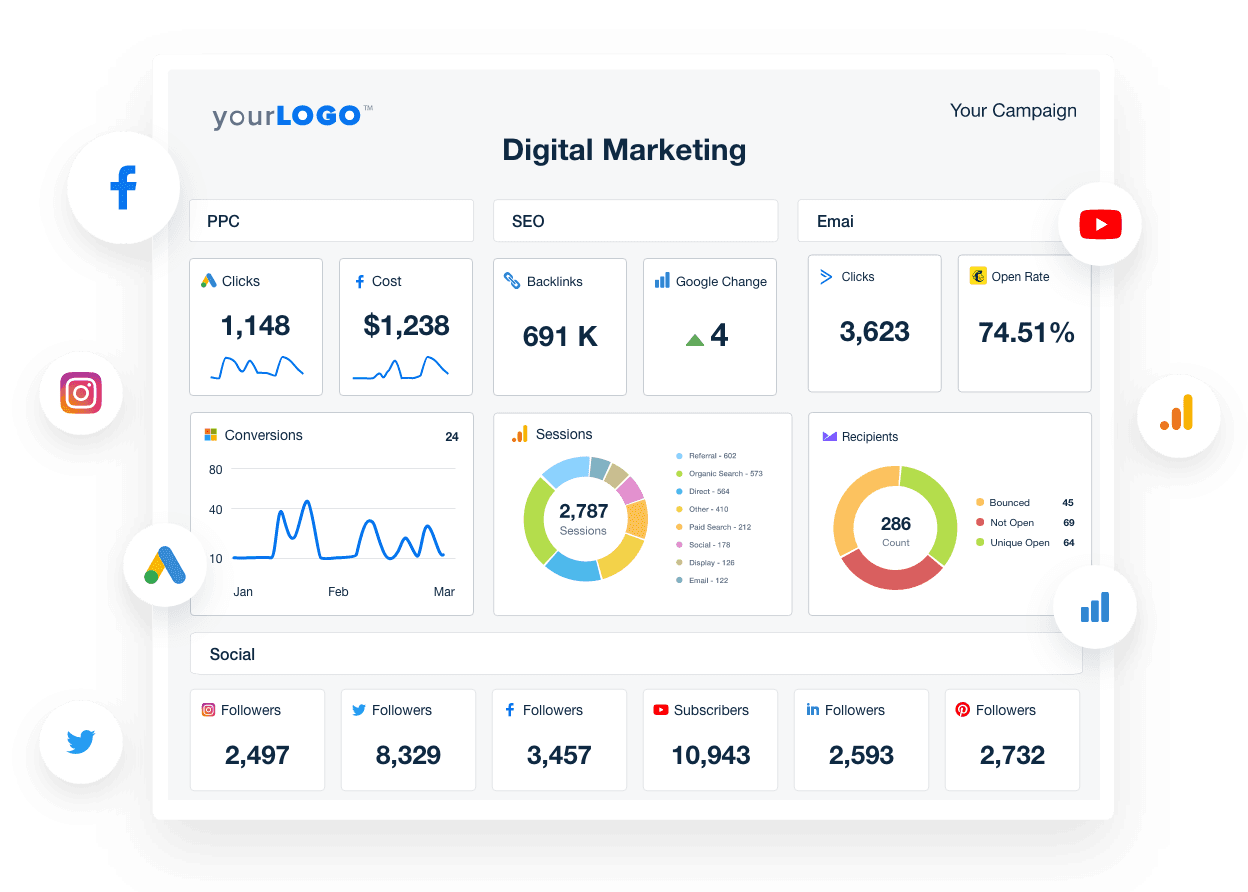
Track campaign results across every channel and prove ROI in real time. Try AgencyAnalytics free for 14 days!
Key metrics and methods to track ROI
Measuring ROI starts with having a clear, consistent framework. While flashy KPIs may look impressive, the real value lies in connecting your metrics back to cost and revenue. These data tracking essentials are the backbone of your ROI tracking and optimization strategy.
To build a strong ROI tracking process, make sure you:
Set clear goals: Define what success looks like–leads, sales, revenue, retention, etc.
Identify all relevant costs: Include everything–ad spend, tools, production, freelancer hours, agency fees.
Use the right technology: Leverage platforms that track and attribute performance across channels and ad groups.
Use a reliable formula for ROI calculation: The most basic version is below. Marketing ROI (MROI) = (Marketing Value − Marketing Cost) / Marketing Cost
Or, use our Marketing ROI calculator to find out exactly how much return your marketing efforts are generating.
Of course, ROI doesn’t exist in a vacuum–it’s shaped by the quality of your strategy, how well you allocate resources, and how you measure success. To fully understand your marketing impact, focus on these key performance indicators:
Core metrics that drive ROI
Customer Acquisition Cost (CAC): When CAC goes down and revenue generated increases, you're on track for a positive ROI. This metric helps pinpoint efficiency in your spend.
Customer Lifetime Value (LTV): Strong campaigns don’t just create conversions—they drive long-term value. LTV connects directly to total revenue and overall ROI.
Conversion Rate: Higher conversion rates turn more website traffic into customers, improving your return on marketing expenses without increasing spend.
Click-through Rate (CTR): CTR tells you how engaging your content is based on how many people are taking a desired action and where your marketing channel efforts are paying off.
Average Order Value (AOV): Bigger purchases increase revenue per customer and make each interaction more profitable.
Brand Loyalty: When clients retain customers longer, the return on their initial spend increases, boosting ROI over time.
Tracking these alongside your clients' production and operational costs gives you a clearer picture of overall campaign performance, which tactics are driving results, and where to optimize.
If you're only reporting on the numbers that make you look good, you're not giving your clients an accurate picture of what's actually going on. They might think that everything is going well when in reality, it's not. This can led to a very awkward meeting in a few months where the client asks for a ROI on marketing spend so far.
Guy Hudson, Founder, Bespoke Marketing Plans
The 6 best marketing ROI tracking tools in 2025
We’ve explained why tracking ROI is key, but what are the best ways to do it? A tracking tool is a key component of your toolkit, helping you track metrics that matter and distill them into accurate insights that clients care about.
The right marketing ROI tracking tool can help you pinpoint what’s working, justify spend, and forecast results with confidence. Whether you're managing PPC, SEO, social, or email, these platforms provide actionable insights that go beyond vanity metrics.
Here’s a breakdown of six of the top analytics tools agencies are turning to in 2025:
AgencyAnalytics: Best for fast-growing agencies managing multiple accounts

AgencyAnalytics is purpose-built for agencies. It pulls in data from over 80 marketing channels, including Google Ads, Facebook, SEO platforms, and email tools–and turns them into customizable, client-ready reports. With white labeled dashboards, scheduled reporting, and built-in ROI tracking, it helps you communicate results clearly and consistently.
Even better? Features like Ask AI, AI summaries, proprietary benchmarks, anomaly detection, and metric alerts not only help you track ROI but also improve client outcomes.
Key features:
Integrations with 80+ platforms (including PPC, SEO, and ecommerce)
Drag-and-drop dashboard builder
White label reporting with custom branding
Built-in goal and ROI widgets
Client access controls and permissions
Why it stands out: AgencyAnalytics is built with agencies in mind–meaning everything from permissions to reporting templates is optimized for your workflow. You spend less time wrangling data and more time on high-value tasks.
Pricing: Plans starting at $59/month.
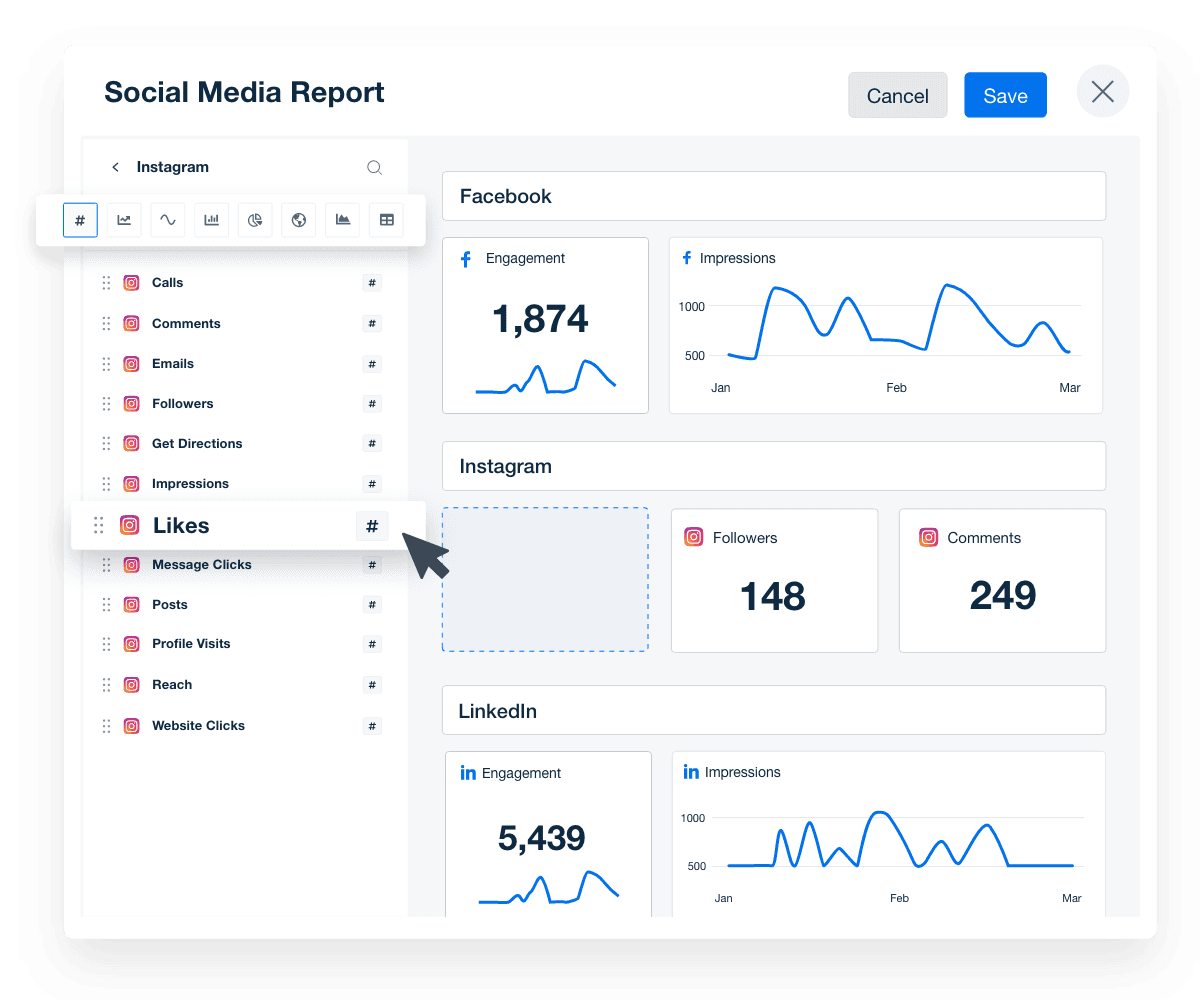
Want to track ROI, create beautiful reports, and save hours every month? Start your free trial with AgencyAnalytics and show clients exactly what their marketing delivers.
Google Analytics: Best for budget-conscious agencies
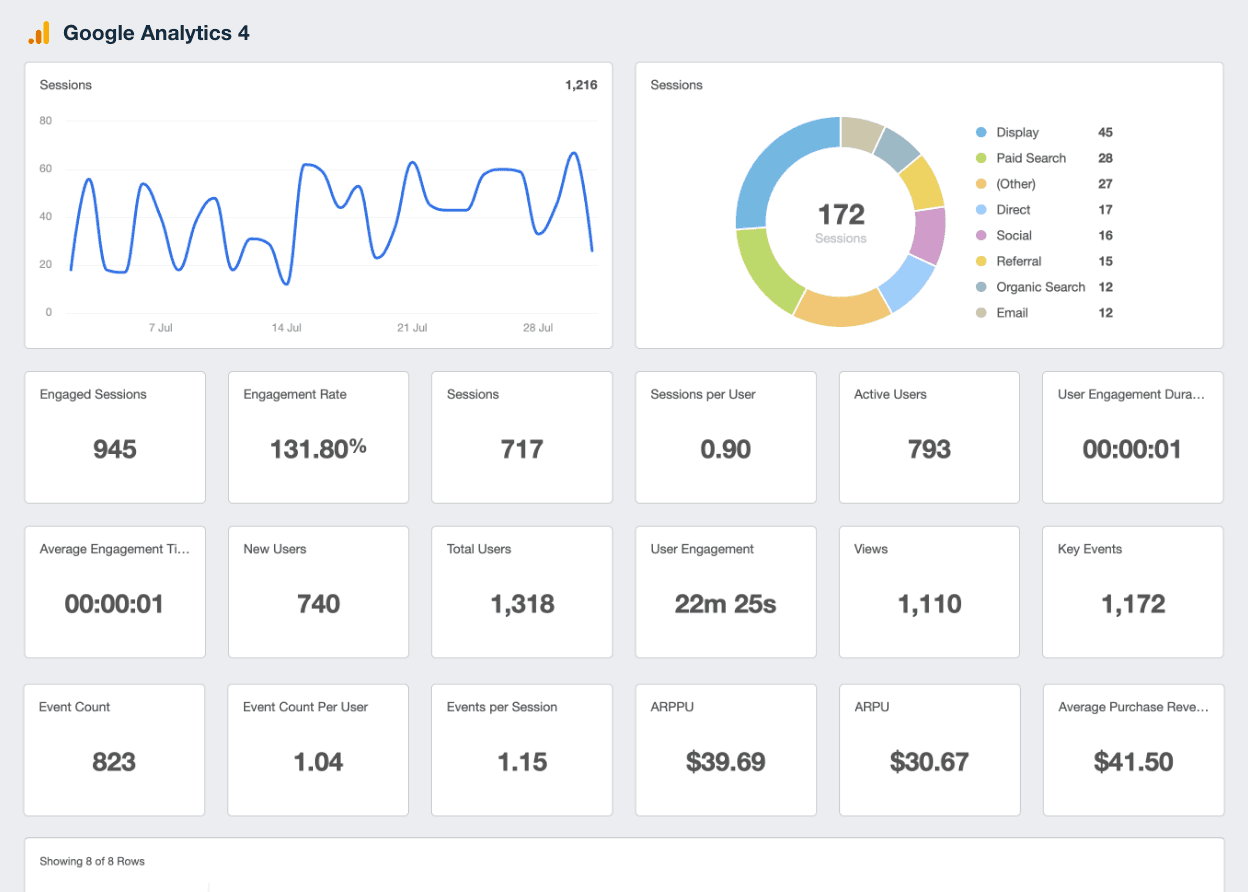
Google Analytics remains a staple for marketers, and GA4 brings a more event-driven model that gives agencies deeper insight into the customer journey. While it requires some setup, GA4 offers deeper insights than some other tools on the market.
Access to historical data can help you identify long-term trends, understand user behavior patterns, and identify areas for improvement. Granular goal tracking and integration with ad platforms helps your agency understand which campaigns are actually driving traffic.
Key features:
Event-based tracking for flexible data capture
Cross-device and cross-platform attribution
Integration with Google Ads and Search Console
Conversion and revenue tracking tied to goals
Custom dashboards with real-time data
Why it stands out: It’s free, powerful, and integrates seamlessly with Google’s ecosystem. With proper setup, GA4 offers granular insights into how users engage with your client's landing pages, such as traffic sources, click through rates, bounce rates, and where the revenue is coming from.
Pricing: Free.
Cyfe: Best for basic reporting
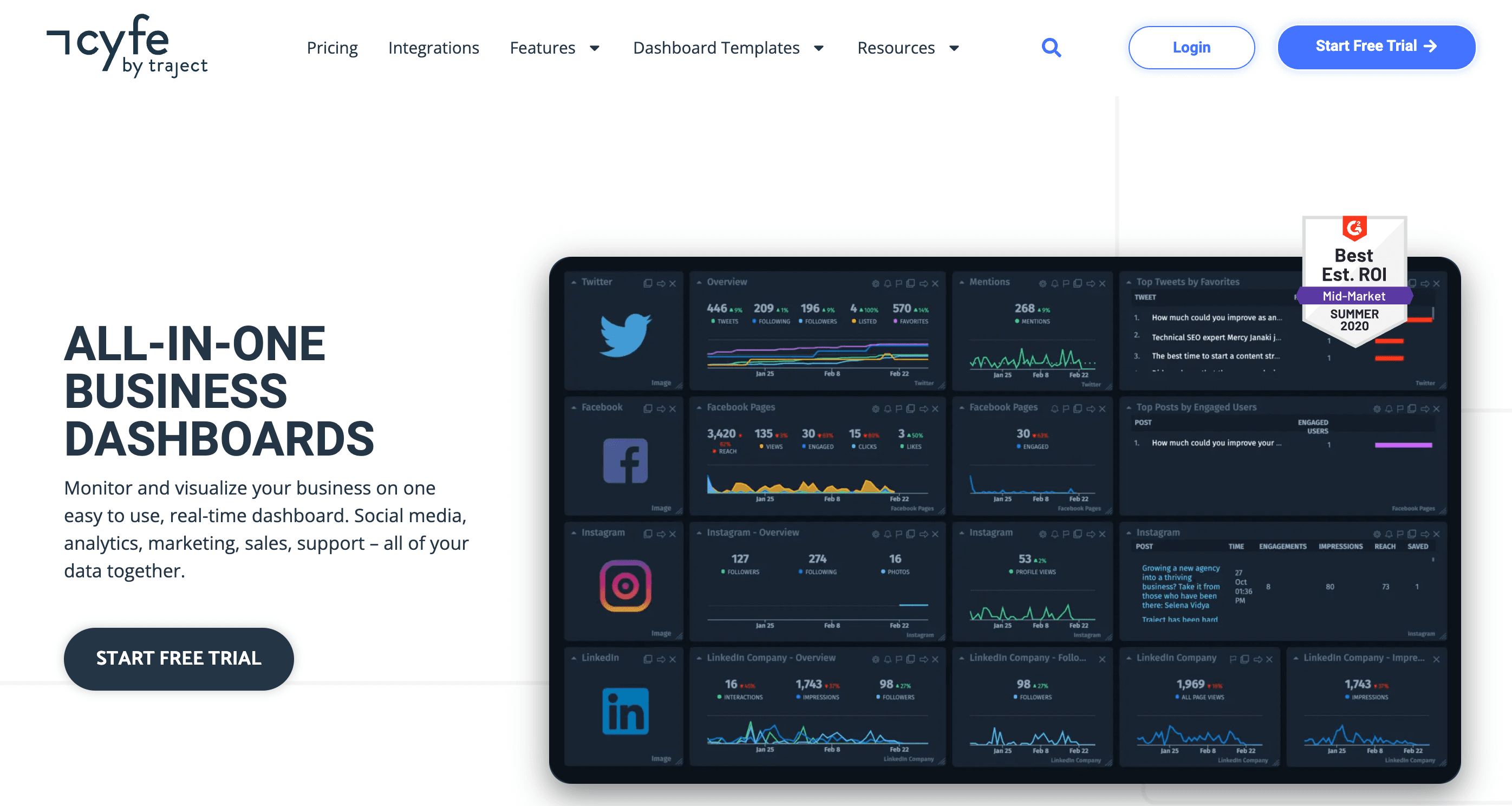
Cyfe is an excellent option for agencies looking for a cost-effective, all-in-one dashboard. From social media ROI to SEO rankings to ad spend, Cyfe lets you build custom widgets that showcase ROI across the board, all without overwhelming clients with too much detail.
Key features:
Pre-built widgets for marketing, sales, finance, and more
Easy integration with Google Ads, Facebook, Mailchimp, and more
White label dashboards for clients
Scheduled reports and alerts
Affordable pricing
Why it stands out: Cyfe gives smaller agencies or teams with tight budgets a centralized way to show performance and ROI, without investing in multiple tools.
Pricing: Plans starting at $29/month.
RulerAnalytics: Best for CRM syncing
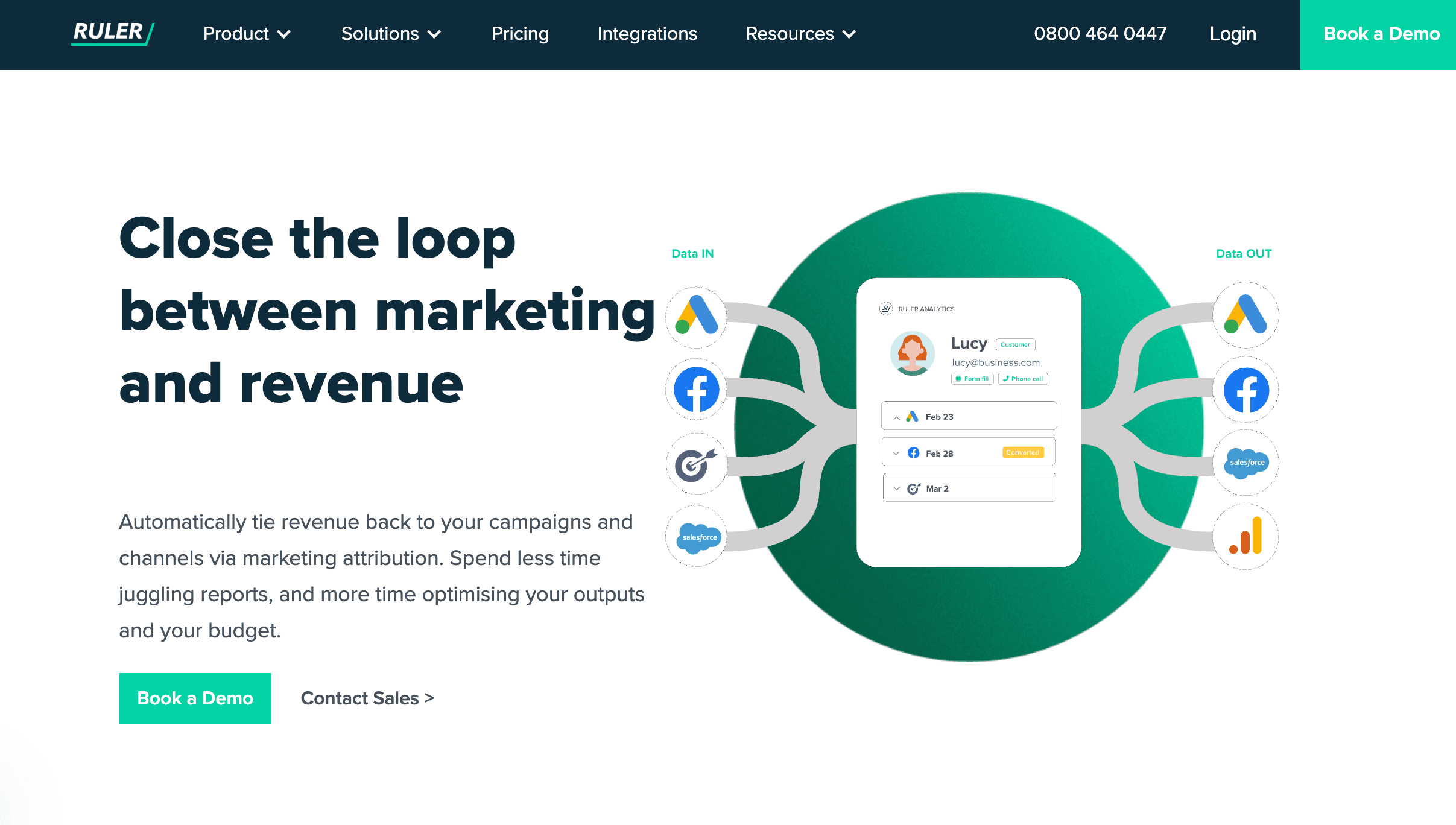
Ruler Analytics bridges the gap between marketing and sales by tracking the full customer journey, from user clicks to closed deals. For agencies working with clients in high-value industries like SaaS or healthcare, Ruler excels at multi-touch attribution and syncing marketing data with CRMs like HubSpot, Salesforce, and Zoho.
Key features:
Multi-touch attribution across campaigns
Call tracking and form submission capture
Integrations with major CRMs and ad platforms
Revenue reporting tied directly to lead sources
Visitor-level tracking
Why it stands out: Ruler helps agencies prove ROI not just by channel, but by revenue, making it easier to justify spend and optimize campaigns based on actual business outcomes.
Pricing: Plans starting at $240/month.
Kissmetrics: Best for subscription-based clients
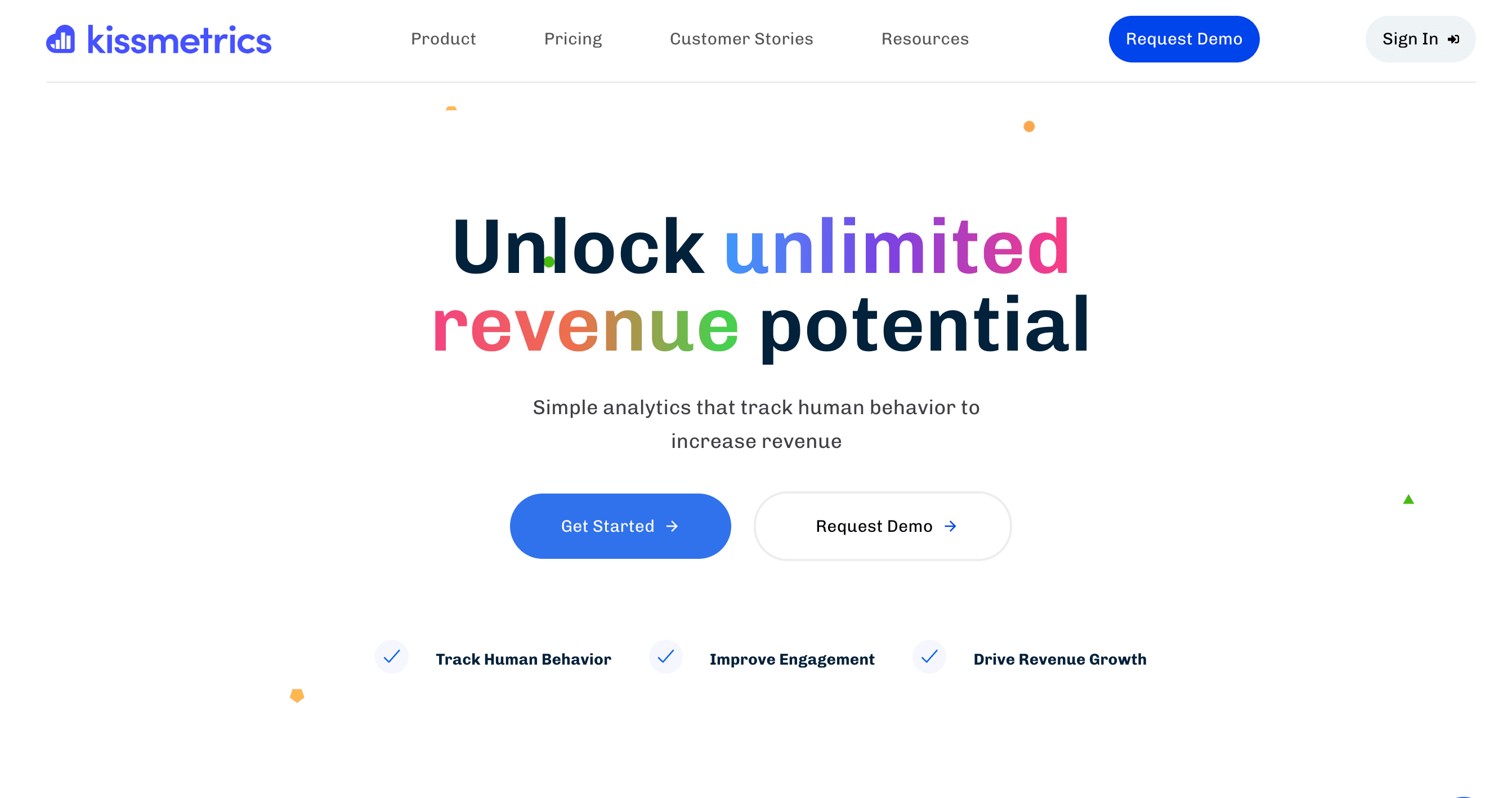
Kissmetrics zeroes in on customer behavior and lifetime value (LTV), making it ideal for agencies managing growth for subscription or transactional businesses. It goes beyond traditional web analytics by showing how individual users interact over time and how those interactions impact conversion and retention.
Key features:
User-level analytics with cohort tracking
Funnel visualization and conversion analysis
Revenue reporting by customer segment
Real-time campaign ROI tracking
Integrations with Shopify, Stripe, and CRMs
Why it stands out: Kissmetrics helps agencies tie marketing efforts to customer lifetime value, making it easier to prioritize high-ROI channels and campaigns that drive repeat business.
Pricing: Available upon request.
Mixpanel: Best for funnel analysis
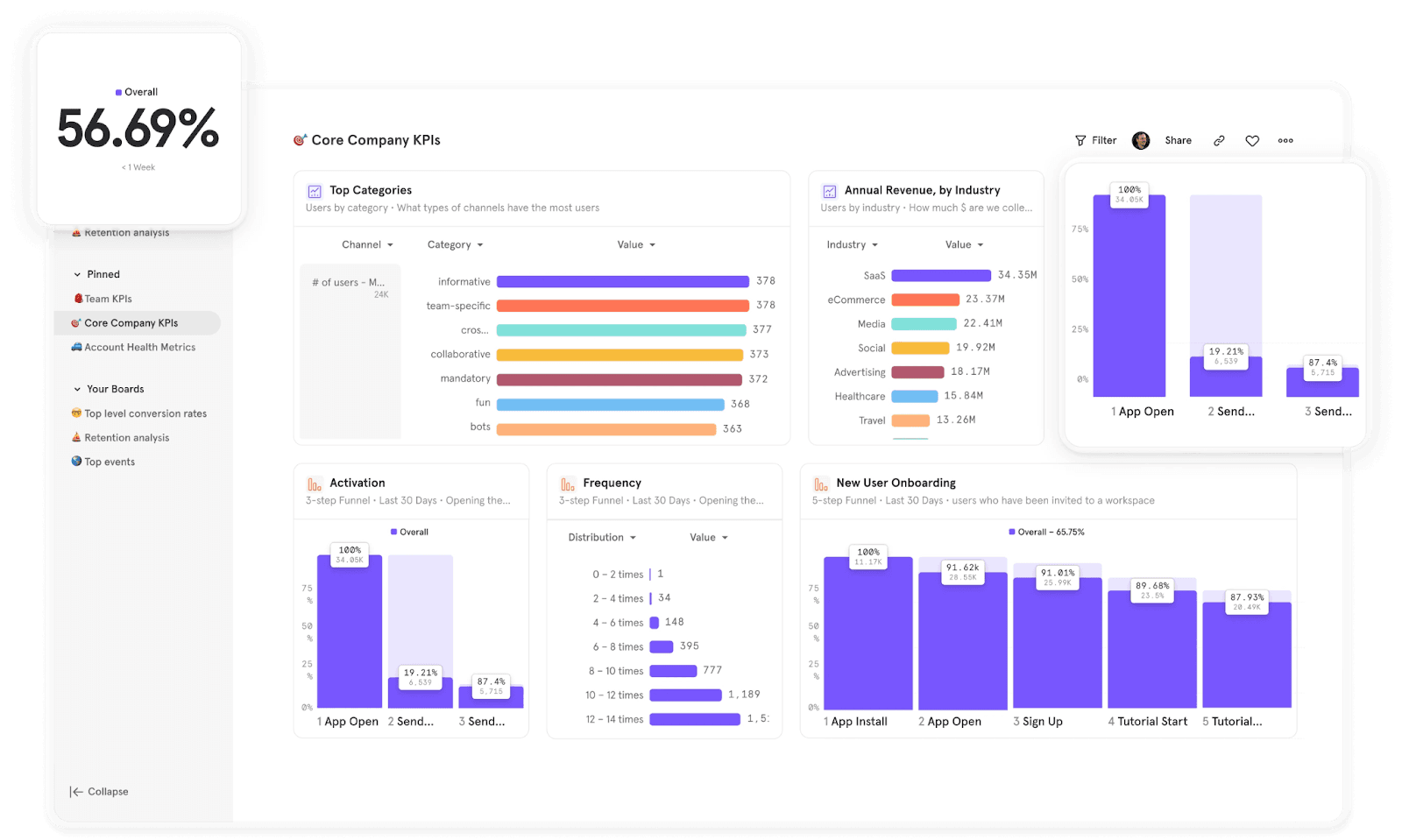
Mixpanel specializes in product analytics, helping agencies track how users engage with sites, apps, or SaaS products. Dig into the actions that a user completes (and why), pages visited, and determine the cause of low conversion rates. Mixpanel offers detailed event tracking, funnel analysis, and retention reporting–all critical for agencies helping clients optimize onboarding, user flows, and upsell paths.
Key features:
Event-based user tracking
Funnel and cohort analysis
Retention and churn metrics
A/B test performance tracking
Data visualizations with interactive dashboards
Why it stands out: Mixpanel helps agencies focused on product-led growth or app-based clients demonstrate how marketing contributes to user activation, retention, and expansion–not just acquisition.
Pricing: Free plans available.
Adobe Analytics: Best for complex data tracking
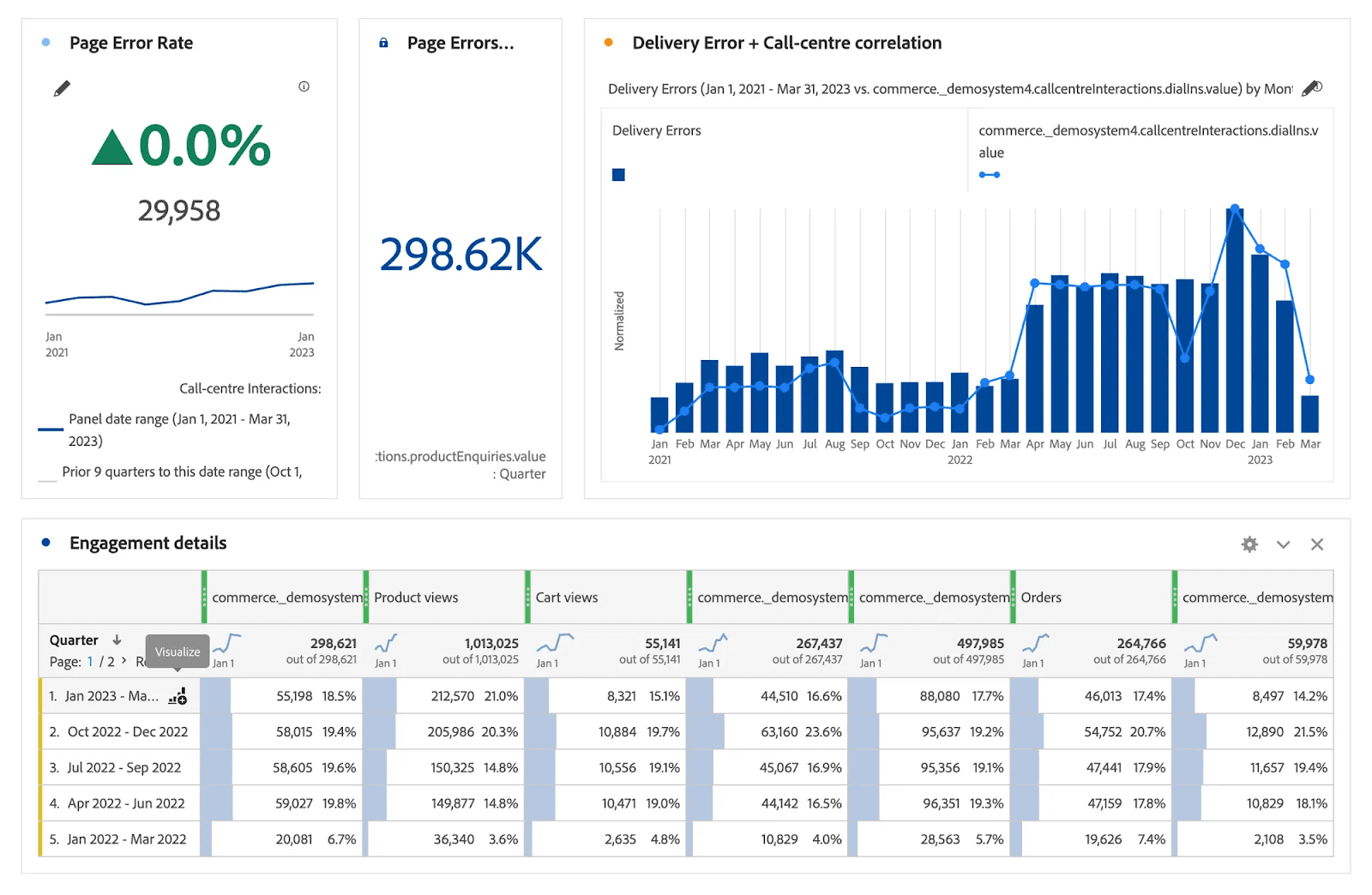
Adobe Analytics is a powerhouse for agencies working with large, data-driven clients. It offers advanced segmentation, predictive analytics, and real-time insights across multiple channels. While it requires more setup and a bigger budget, it delivers deep value for agencies managing sophisticated campaigns with high expectations.
Key features:
Cross-channel attribution and segmentation
Predictive analytics powered by AI (Adobe Sensei)
Real-time dashboards and data visualization
Advanced customer journey mapping
Tight integration with Adobe Experience Cloud
Why it stands out: Adobe Analytics is built for scale, empowering agencies to customize tracking parameters and dive deep into granular data and uncover high-value insights that drive ROI at an enterprise level.
Pricing: Available upon request.
5 tips to improve your marketing ROI
1. Know the difference between ROAS and ROI
Return on ad spend (ROAS) tells you how much revenue you're generating per dollar spent on advertising. It’s helpful, but it’s not the full picture. ROI accounts for all associated costs, including labor, tools, content creation, and overhead. To make smarter budget decisions, agencies need to evaluate both. ROAS can look great while your actual ROI is negative if your margins are thin or you're overinvesting in low-yield efforts.
Need a deeper dive? Check out our ROAS vs ROI guide to compare the two side by side.
2. Focus on high-intent channels
Not all traffic is created equal. Channels like paid search, retargeting, and email often drive more conversion-ready users than upper-funnel tactics like display or organic social. Shift more budget toward high-intent channels that consistently produce qualified leads and revenue—and track which marketing campaigns contribute to closed deals, not just clicks.
3. Double down on what works (and cut the rest)
It sounds obvious, but many agencies struggle to act on their data. Use attribution tools to pinpoint your most cost-effective campaigns, and reallocate spend accordingly. The 80/20 rule often applies: 20% of your campaigns drive 80% of your results. Don’t be afraid to cut underperforming channels, even if they look good on surface metrics.
4. Align with sales to track true revenue impact
Agencies often stop at leads or conversions, but real ROI means tracking revenue data. Work with your clients’ sales teams (or integrate with their CRM) to follow the customer journey beyond the initial campaign. Tracking conversions and being able to pinpoint which leads actually turn into revenue helps you refine targeting and prove your value with hard numbers.
5. Automate reporting, but customize insights
Use reporting tools to automate data collection and visualization, freeing up time for analysis. But don’t just send clients templated dashboards–contextualize the data. Show them how campaign performance ties back to their business goals, and highlight actionable takeaways. That’s what turns a report into a trusted partnership.
The power of ROI tracking
Clients don’t want reports, they want results. ROI tracking helps you move the conversation beyond surface-level metrics and focus on what truly matters: business impact.
By tracking ROI, you guide clients to make smarter, data-informed decisions about where to invest their marketing budget. While metrics like page views have their place, it’s your ability to connect them to revenue that builds trust, proves value, and drives growth for your clients and for your agency.
AgencyAnalytics helps more than 7,000 agencies prove their ROI to clients by turning basic information into a detailed look with detailed analytics. Show clients what you’re worth–sign up for your free 14-day trial today.

Written by
Anya Leibovitch is a B2B SaaS content marketing specialist. She partners with tech companies to design and execute their content marketing strategy. A writer first and foremost, she harnesses the power of storytelling to build and strengthen relationships between companies and the clients they serve.
Read more posts by Anya LeibovitchSee how 7,000+ marketing agencies help clients win
Free 14-day trial. No credit card required.



